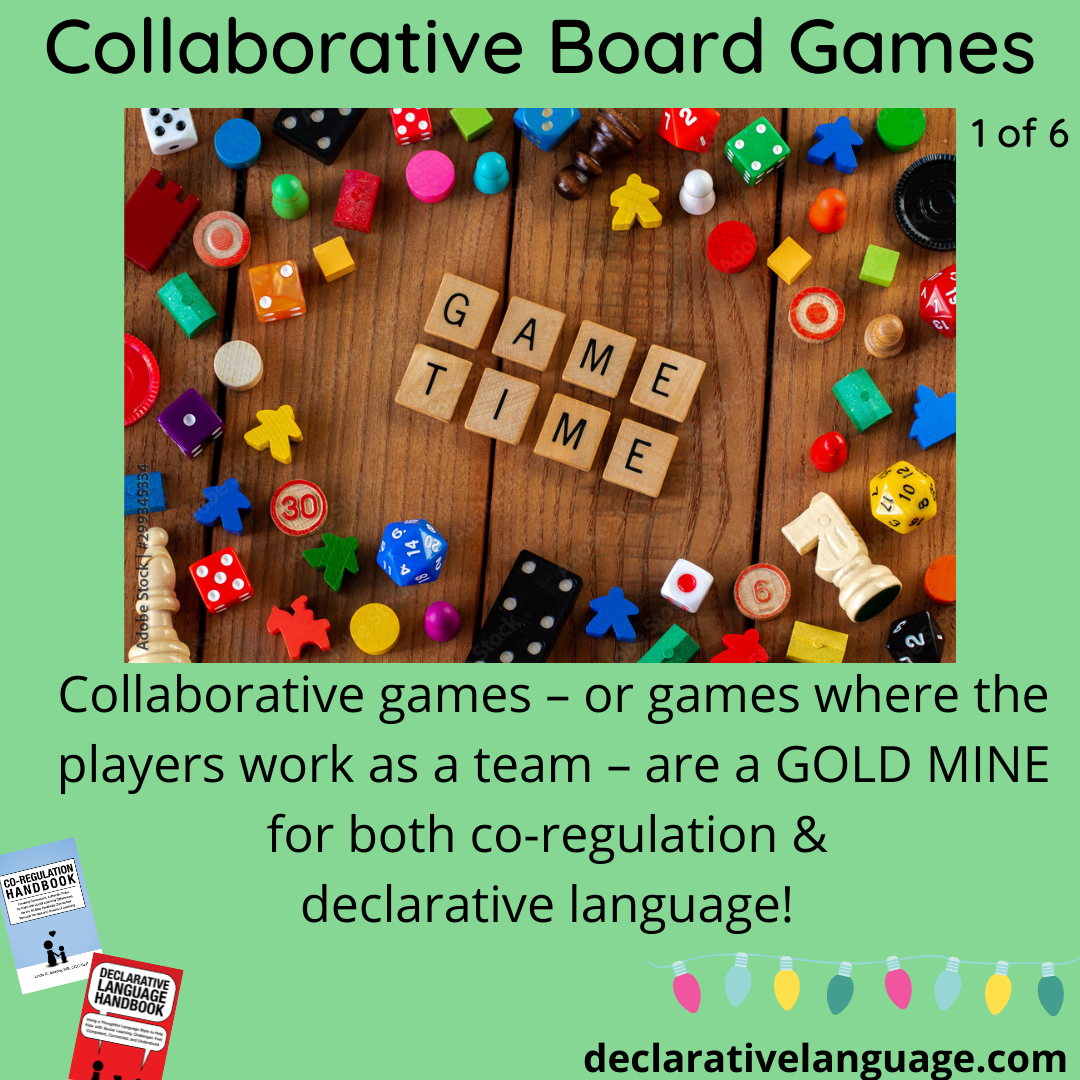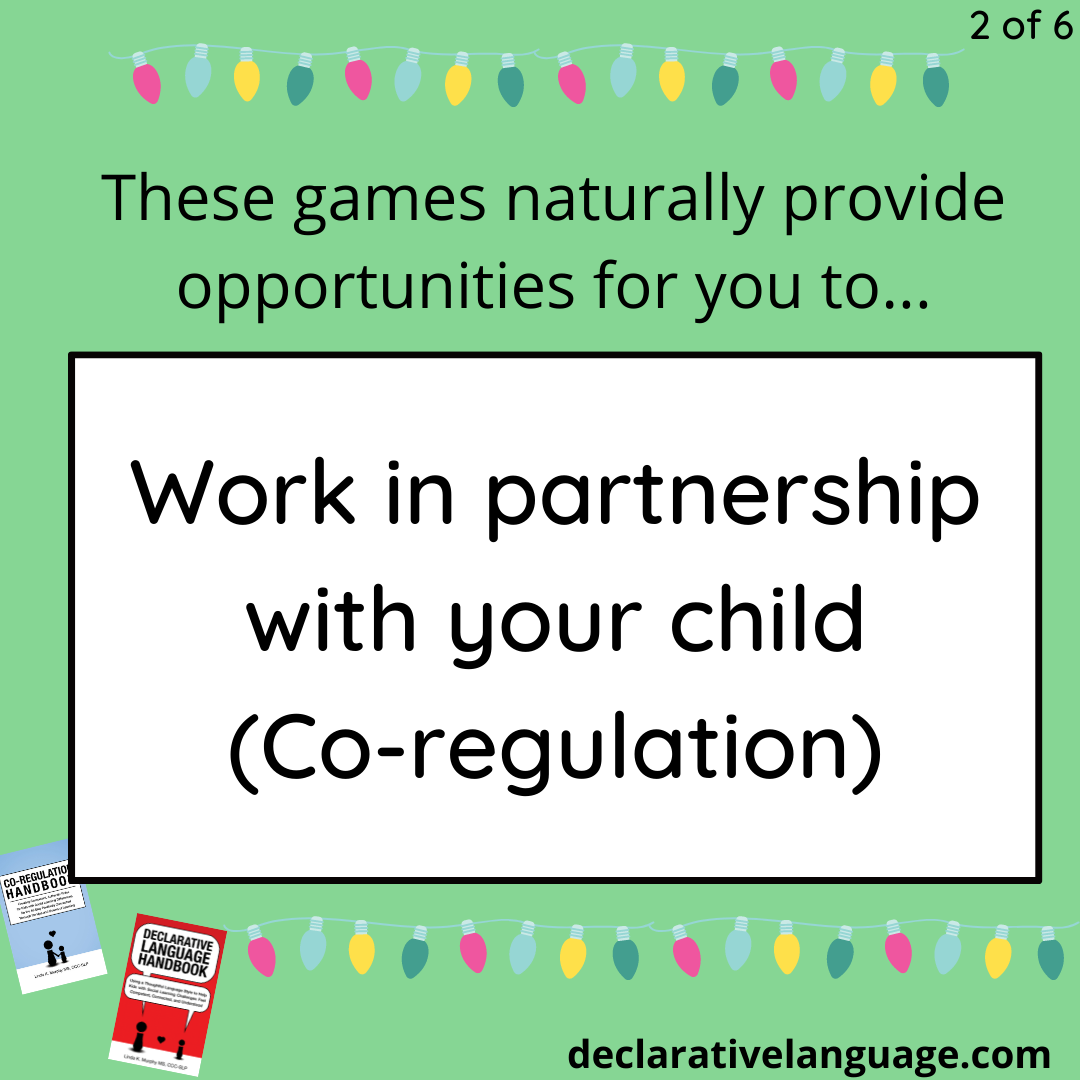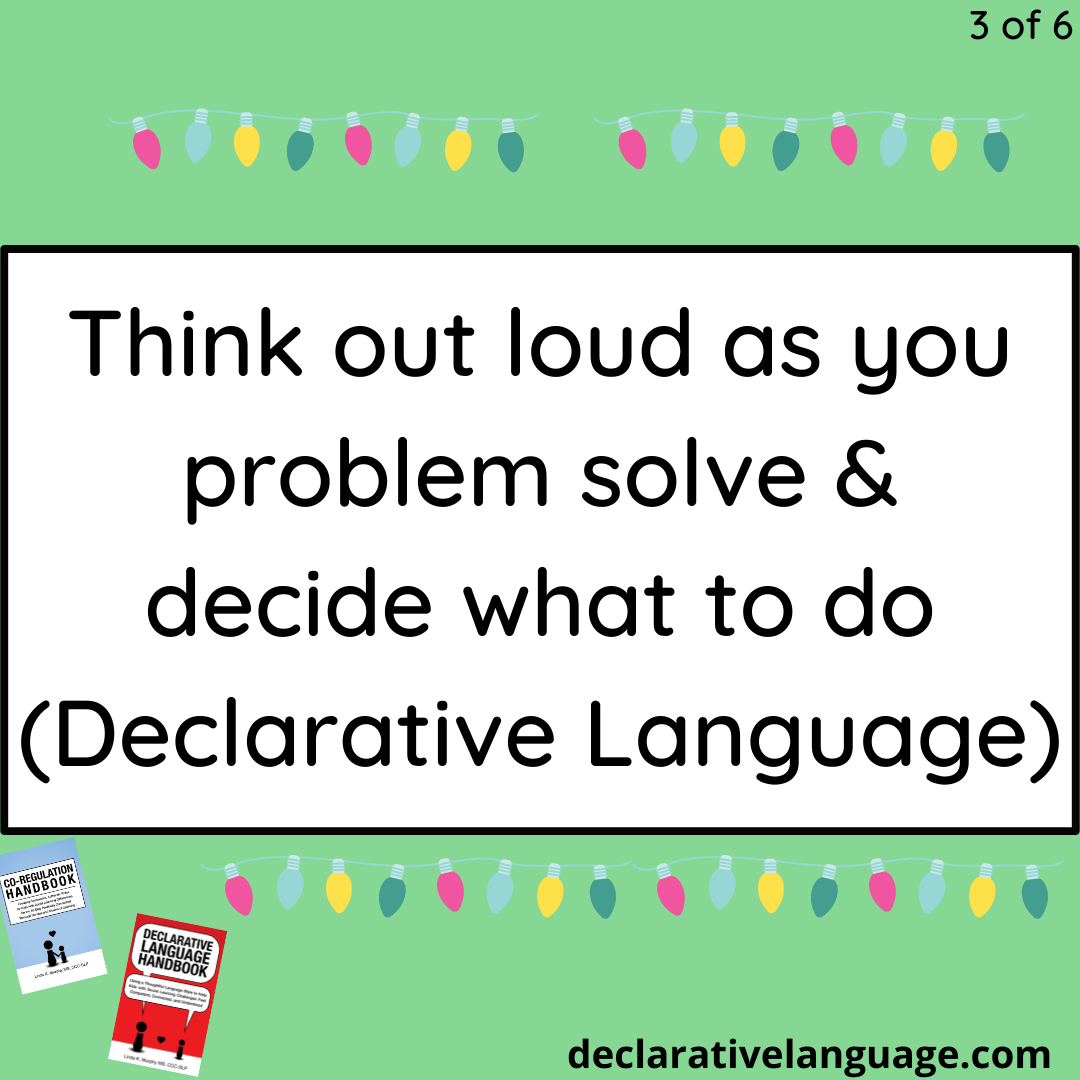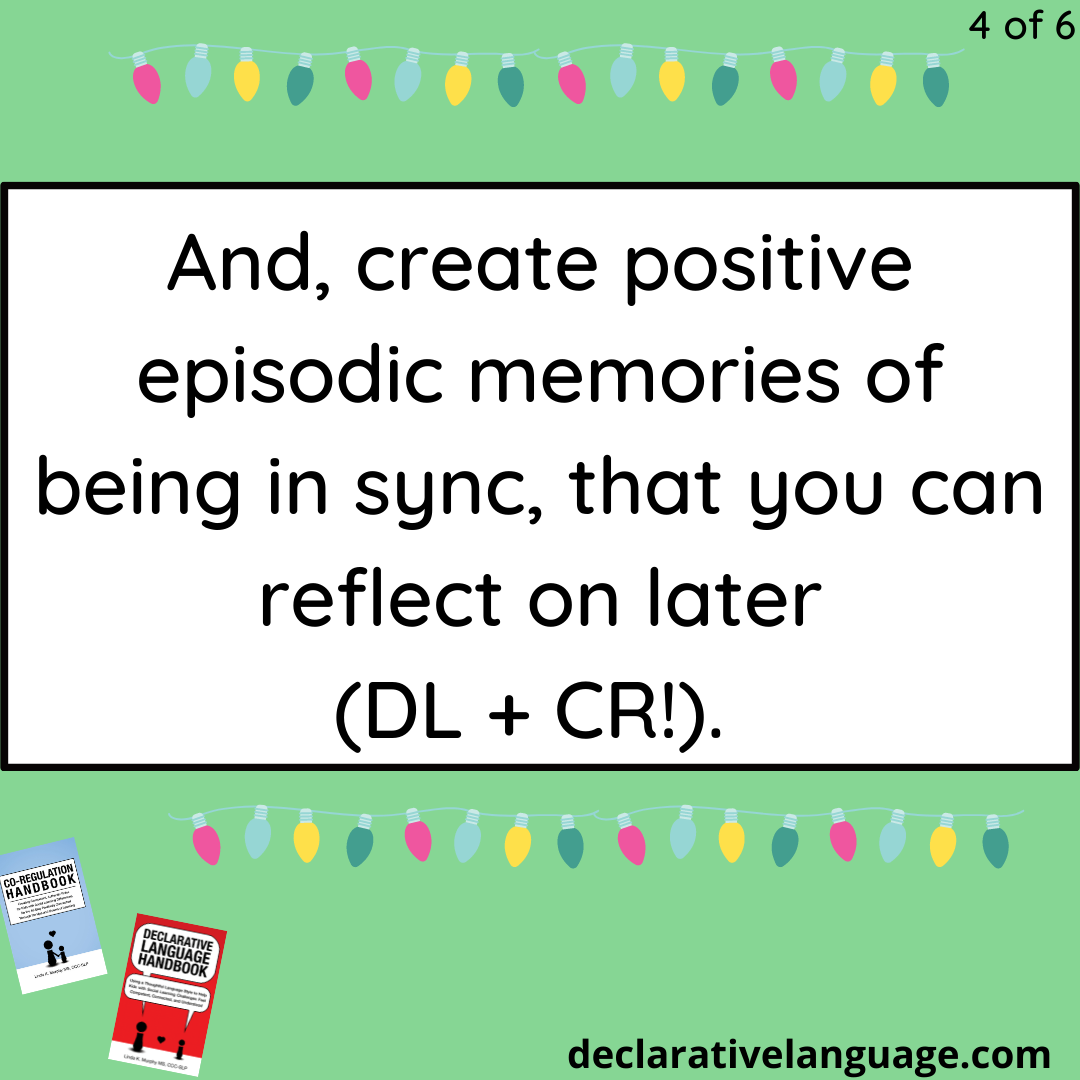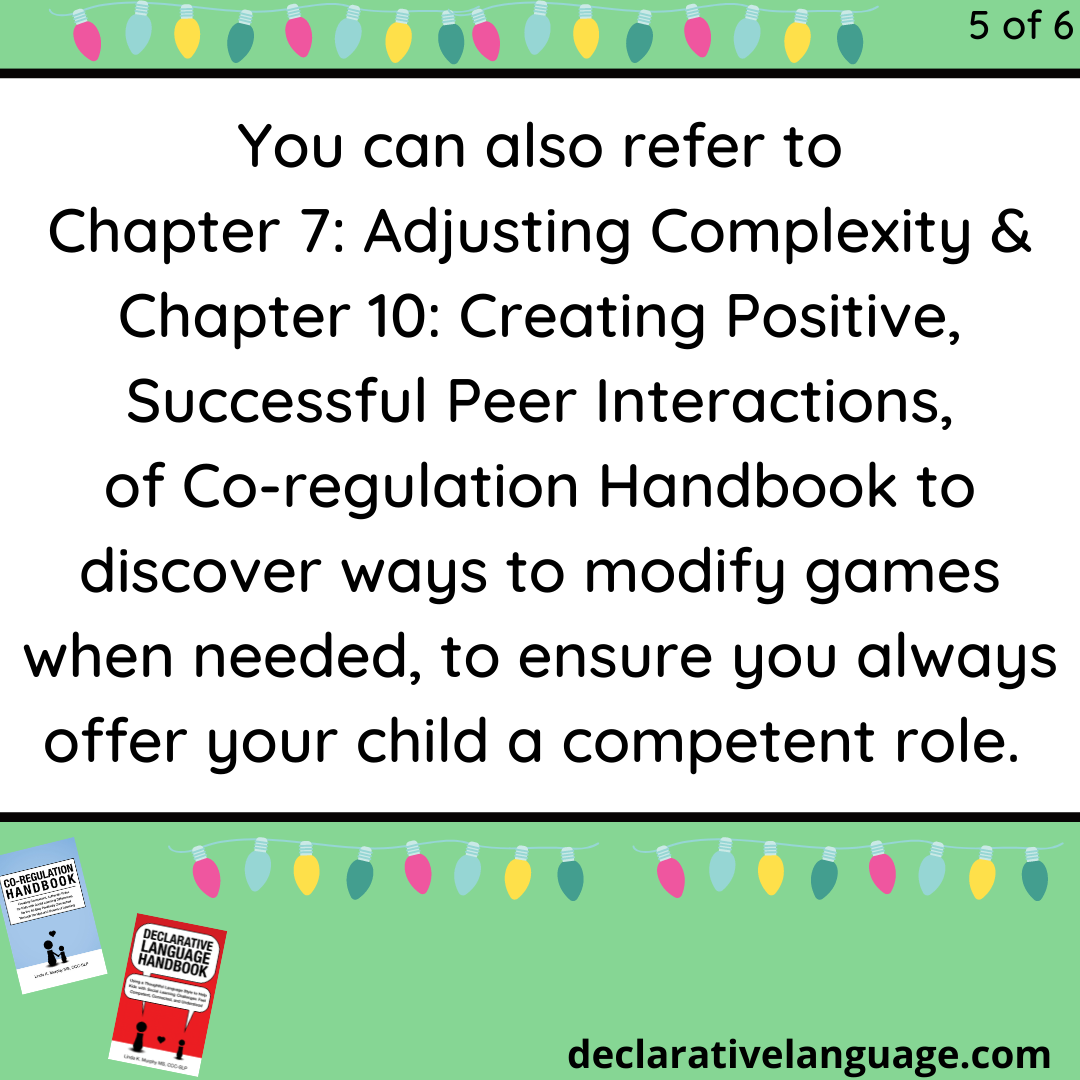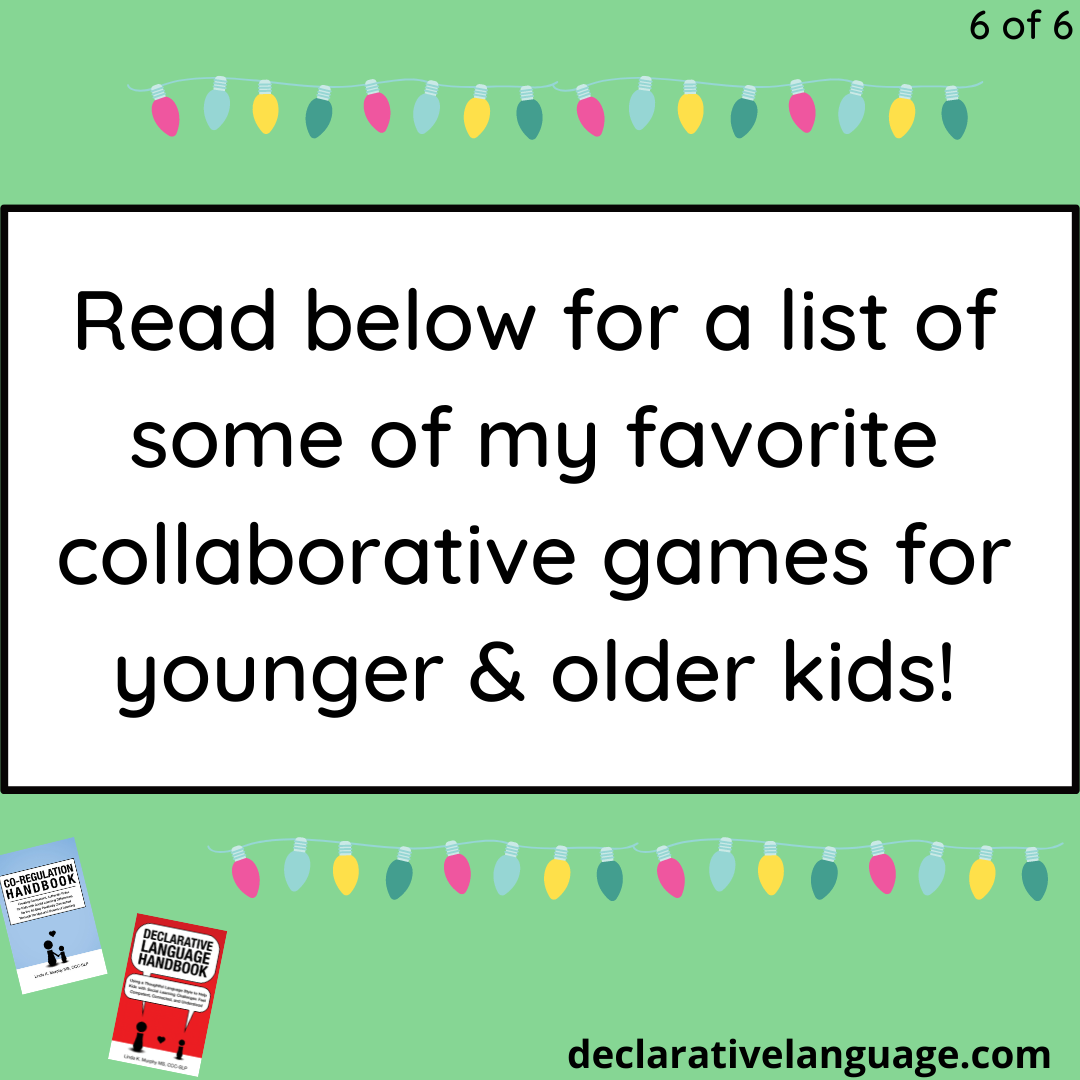Collaborative Board Games
Last week I talked about checkers - a competitive game - and how to use DL and CR to create social learning opportunities while playing. This week, keeping in mind that you may be looking for last minute gift ideas – I want to talk about collaborative board games.
Collaborative games – or games where the players work as a team – are a GOLD MINE for both co-regulation and declarative language use! These games naturally provide opportunities for you to:
work in partnership with your child (co-regulation)
think out loud as you problem solve and decide what to do (declarative language)
and create positive episodic memories of being in sync, that you can reflect on later (DL + CR!).
You can also refer to Chapter 7: Adjusting Complexity and Chapter 10: Creating Positive, Successful Peer Interactions, of Co-regulation Handbook to think of ways to modify or adapt games when needed, to ensure you always offer your child a competent role.
So, without further adieu … read below for a few of my faves!
Younger Kids
Hoot Owl Hoot by Peacable Kingdom
This is a bright, colorful game in which players work together to get all the owls home before the sun comes out. It can be helpful to modify this game slightly to have less owls on the board (i.e., you only need to get three owls home versus all six), especially with kids who worry about the owls. As kids get experience playing, and more owls are added, strategy becomes important and you can use DL to think through your options!
Dinosaur Escape by Peacable Kingdom
Dinosaur fans love this game where players work together to help three dinosaurs safely escape from a volcano threatening to erupt. As with Hoot Owl Hoot, the game can be modified for beginning players such that only two dinosaurs need to be rescued, or cards can be turned over to minimize demands on memory.
Kids a Little Older
Cauldron Quest by Peacable Kingdom
This is a great game for Harry Potter fans, and kids who naturally love math! In this game, players work together to get all the necessary ingredients to the cauldron before the evil wizard blocks all paths to get there. There are magic spells to cast, potion bottles, and more complex rules to remember. But, once kids learn the rules, they usually have it down before the grown-ups do!
Max the Cat by Family Pastimes (although ages 4-7 is the recommended age on this game, in my experience a little older is better.)
In this game, kids work together to help three animals get to their homes before Max the Cat captures them. This can be a great game to help kids manage worry in a supportive context and can be modified as needed so that kids are not pushed beyond their threshold of worry before they are ready. For example, there is a shortcut Max can take, getting him more quickly to the little animals, but it can be okay to play in a way that the shortcuts are not an option for the predator. Saving the animals together creates many opportunities for DL turn to turn around multiple decisions such as what animal to move and when to call Max back to the porch for a treat such as milk or catnip, if he is getting too close to one of the animals.
Older Kids
Forbidden Island by Gamewright
This game is a bit complex, and takes time to learn, but once you know how to play, you realize quickly the importance of working as a team! In this game, players work together to collect all four treasures before the island floods. The game adds interesting elements as kids assume varying roles and special powers. For example, “The Diver” can swim underwater through several squares whereas “The Pilot” can fly across the island. Turn to turn, players make decisions together that are in sync with their shared, ultimate goal.
Because this game is more complex, time must be spent on the set-up, which also provides many co-regulatory opportunities (more on this idea in Chapter 10). Then, depending on time, you may or may not finish the game in one sitting. When you realize you are not going to finish in the time you have available, you could take a photo of the game board and make a plan to pick up where you left off next time you play (using executive functioning skills of time management, planning and reflecting!). This game is great for kids who love intrigue, adventure and challenge, and can manage their attention well in the presence of multiple game pieces.
Castle Panic by Fireside Games
In this game, players work together to defend their castle from Monsters that come out of the forest to attack. Like Forbidden Island, this game has multiple materials and rules to learn at first, but once players learn the basic pattern of the game, it becomes much easier. Kids who love the idea of defeating monsters become quickly engaged and interested, while there is also an element of math and numbers for kids who love that aspect of learning. Players work together to plan strategies to keep the castle intact, and there are many decisions to make turn to turn that keeps this game fast paced and exciting.
Happy playing!
If you like my Sunday Snippets of Support, you can receive them directly to your inbox here.

